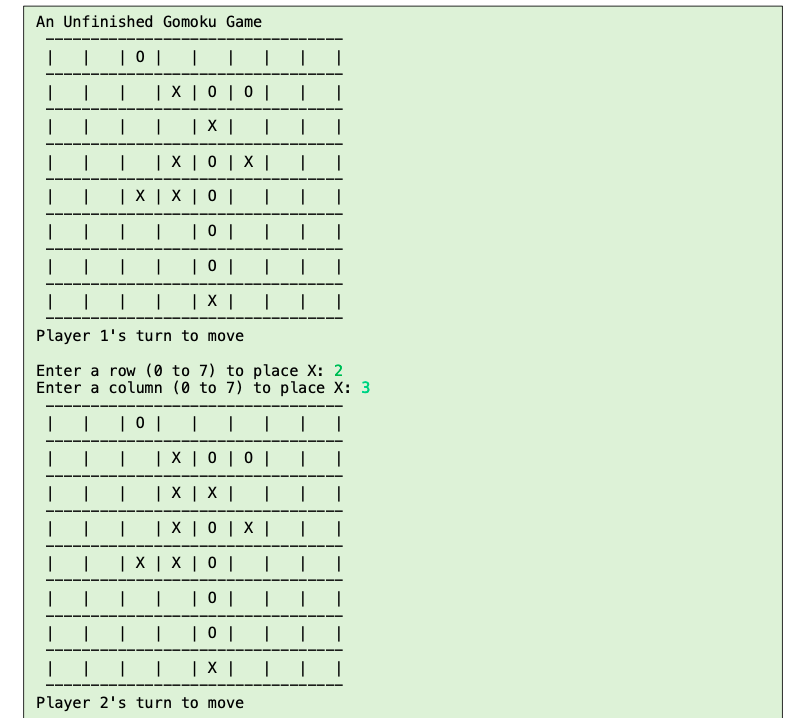
Renju is played on a 15x15 board, with the rules of three and three, four and four, and overlines applied to Black only and with opening rules, some of which are following the swap pattern.Efforts to improve fairness by reducing first-move advantage include the rule of swap, generalizable as "swap-( x, y, z)" and characterizable as a partially compounded and partially iterated version of the pie rule ("one person slices the other chooses"): One player places on the board x stones of the first-moving color and a lesser number y stones of the second-moving color ("slicing" in the pie metaphor) the other player is entitled to choose between a) playing from the starting position, in which case the selecting player is also entitled to choose which color to play, and b) placing z (usually ) more stones on the board at locations of that player's choice ("reslicing" in the pie metaphor, with limitations created by the board's existing setup akin to limitations arising from the existing slices in the pie), in which case the former player is entitled to choose which color side to play.These stones must block an opponent's row of three. Alternatively, a handicap may be given such that after the first "three and three" play has been made, the opposing player may place two stones as their next turn.The rule of four and four bans a move that simultaneously forms two rows of four stones (open or not).The rule of three and three bans a move that simultaneously forms two open rows of three stones (rows not blocked by an opponent's stone at either end).Other similar games Optional ("house") rules The overlines and three and three rules still apply. Omok is played the same as Standard Gomoku however, it is played on a 15x15 board and does not include the rule of four and four.This rule makes Gomoku more flexible and provides more power for White to defend. In Caro (also called Gomoku+, popular among Vietnamese), the winner must have an unbroken row of five stones and this row must not be blocked at both ends.Free-style gomoku requires a row of five or more stones for a win.Standard gomoku requires a row of "exactly" five stones for a win: rows of six or more, called overlines, do not count.So a number of variations are played with extra rules that aimed to reduce black's advantage. Victor Allis proved that black could force a win (see below). In the nineteenth century, the game was introduced to Britain where it was known as Go Bang, said to be a corruption of the Japanese word goban, said to be adopted from Chinese k'i pan (qí pán) "chess-board." Variations and opening rulesīlack (the player who makes the first move) was long known to have a big advantage, even before L. The game is also popular in Korea, where it is called omok (오목 ) which has the same structure and origin as the Japanese name. Go means five, moku is a counter word for pieces and narabe means line-up. The name "Gomoku" is from the Japanese language, in which it is referred to as gomokunarabe (五目並べ).

It is said to have originated in China with the name Wu Zi Qi (五子棋). The winner is the first player to get an unbroken row of five stones horizontally, vertically, or diagonally. This game is known in several countries under different names.īlack plays first if white did not just win, and players alternate in placing a stone of their color on an empty intersection. Also called Gobang or Five in a Row, it is traditionally played with Go pieces (black and white stones) on a go board with 15x15 intersections however, because once placed, pieces are not moved or removed from the board gomoku may also be played as a paper and pencil game. Gomoku is an abstract strategy board game.


 0 kommentar(er)
0 kommentar(er)
